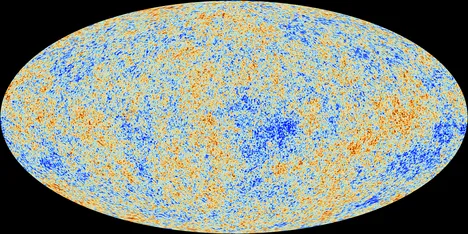Cosmology

Precise observations of the anisotropies in the temperature and polarization of the cosmic microwave background (CMB) radiation have started the era of precision cosmology, complemented by current and future observations of the large-scale structure (LSS) of the universe as well as observations of the Hubble expansion for example via Type-1a Supernovae. Apart from a confirmation of the hot Big Bang paradigm, these observations have led to a standard model of cosmology, the Lambda-CDM model, featuring a cosmological constant that drives the accelerated expansion and a Cold Dark Matter (CDM) component that plays a crucial role for structure formation, complemented by a nearly scale-invariant spectrum of adiabatic and Gaussian primordial perturbations.
The observed properties and ingredients of the Lambda-CDM model call for theoretical explanation, including the nature of Dark Matter and Dark Energy, as well as models of cosmic inflation providing a successful paradigm for studying the origin of primordial perturbations. The rapid observational progress in cosmological observations furthermore requires us to obtain more and more precise theoretical predictions, such as e.g. for mapping the large-scale structure of the Universe with galaxy surveys, that probe the weakly non-linear regime of structure formation and offer the chance to address current open puzzles and tensions in cosmology.
While the physical processes in the early universe can mostly be described in terms of particle physics in flat space-time, the impact of the space-time curvature on microscopic physics may not be negligible during inflation. The investigation of quantum loops in an inflationary or de Sitter background pose an interesting theoretical challenge, and extending the much better developed tools and understanding of flat-space quantum field theory to this situation is highly desirable.
In the T31 group we focus of the interplay of cosmology with particle phyiscs, both in terms of dark sector models that can be tested via structure formation as well as on a methodological level, including precision computations of non-linear clustering based on perturbative field theory techniques as well as for conceptual open questions in the context of quantum field theory in expanding space-time.
- Quantum field theory methods in curved space-time, related to infrared divergences in de Sitter space, cosmological correlators, and soft-gravity theorems
- Advancement of perturbation theory techniques for galaxy clustering, based on effective field theory methods as well as on Vlasov-Poisson dynamics for collisionless matter
- Connections between cosmological models and particle physics theories, including the impact of interacting Dark Matter and dark radiation as well as massive neutrinos on structure formation
You can find a list of publications from T31 in the INSPIRE HEP database
You can find information on master and bachelor thesis topics here